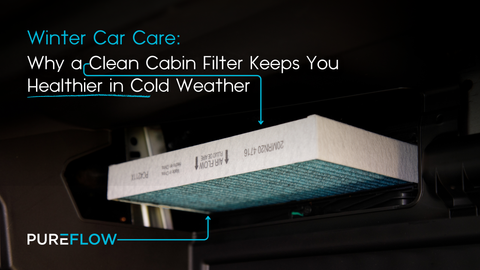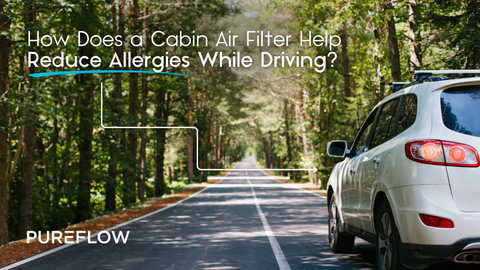What is air pollution?
Air pollution is defined as the presence in the outdoor or indoor air of harmful substances at concentrations above their natural levels, which affect humans, animals, plants, and materials 1. There are many harmful substances entering the environment: sulfur and nitrogen oxides (SOx and NOx), volatile organic compounds (VOCs), particulate matter (PM), which are the tiny solid or liquid particles present in the air, toxic metals such as lead and mercury, radioactive materials, and others. These substances can have a direct effect on the environment and on human health. There are other pollutants that affect people and the environment indirectly. The so-called greenhouse gases (GHG) such as carbon dioxide (CO2) people breathe in and out, are considered extremely important pollutants because they cause climate change, which is the most serious environmental problem today. Ozone-depleting substances, including some refrigerants and foam-blowing agents which were used in the past, destroy the Earth’s ozone layer that protects the living organisms from harmful ultraviolet radiation by the Sun.
What are the sources and levels of air pollution?
Power plants, factories and vehicles, together with agriculture and waste management, are the major sources of air pollution2. Emissions from energy and heat generation by power plants, factories, and vehicles cause smog, which is very familiar to the residents of many big cities. Scientists have described two distinct types of smog. The first type is the classical wintertime ‘London smog’. It is mainly caused by the emissions of sulfur dioxide and soot (the carbonaceous particles). These pollutants mainly come from stationary sources: combustion of coal by power plants and factories3. The problem of wintertime smog persists in the highly industrialized counties and in cold regions, in particular, in China. For example, during 2011–15, a total of 209,321 deaths related to the smog episodes were recorded in Jinan, a large city in eastern China4. The second type of smog is the ‘photochemical smog’, caused by the emissions of VOCs and NOx. These pollutants come mainly from mobile sources, namely, from cars. Under the sunlight, these primary air pollutants produce the secondary pollutants such as O35, therefore its name ‘photochemical smog’. This type of smog is typical for hot weather and hot places with high traffic such as Los Angeles. Thus, the combustion of fossil fuels by vehicles, power plants, and factories causes smog, as well as this combustion plays the main role in global climate change6. Not only human activities, but also natural processes contribute to air pollution: pollen coming from the plants7, mold spores8, and smoke from wildfires in California are the natural pollutants9. These are the sources of outdoor air pollution. When present outside, these pollutants also enter the homes creating the problem of the indoor air pollution. However, the pollutants can come to the houses not only from the outside. Even some furniture can emit harmful substances, such as VOCs, in particular, dangerous formaldehyde10. Smoking cigarettes also impacts indoor air quality very negatively. Importantly, not just the presence, but specific concentrations and the duration of exposure of people and other living organisms to the pollutants really matter. Different factors affect the time the pollutants stay in the air. For example, the weather has a very significant effect on the concentrations of the pollutants in the atmosphere. Different countries have varying regulations with regard to the thresholds of these concentrations, which are usually called air pollution levels. In the U.S., the Air Quality Index is used to report daily air quality. It has six levels from ‘good’, when no health risks due to air quality are present, to ‘hazardous’ causing the emergency situation, when the whole population is expected to be affected. Thus, the higher the level of air pollution is, the greater the health concern is11.
Why air pollution is so dangerous?
The negative effects of air pollution can be almost instantaneous. For example, pollen and mold can trigger hay fever and other allergies immediately. Expose to sulfur dioxide, a typical component of the winter smog, may cause coughing, wheezing, and shortness of breath very soon12. However, with some pollutants, the negative effects are cumulative and delayed: if a person is exposed to a certain pollutant for a long time, it can ultimately cause asthma, stroke or even cancer, such as in case of a naturally occurring radiative gas called radon entering people’s homes13. According to the American Lung Association, more than four in ten U.S. residents lived with unhealthy air in 2014-2016. These 40 % of all Americans are reported to be at risk for premature death and other serious health effects: lung cancer, asthma attacks, cardiovascular damage, and developmental and reproductive harm14. Furthermore, the World Health Organization (WHO) estimated that outdoor air pollution has caused 4.2 million premature deaths worldwide just in 201615. This is half of the population of New York City16. Climate change is considered one of the most dangerous killers. WHO expects that between 2030 and 2050, climate change will cause approximately 250 000 additional deaths per year, from climate change-related hunger, malaria, diarrhea, and heat stress17.
What can be done?
The governments, NGOs, industry, and individuals take steps to prevent and minimize air pollution. At the global level, one success story is the Montreal Protocol that was aimed at phasing out the production of the ozone-depleting substances. The treaty was signed in 1987 and now, according to the assessment made by 300 scientists, the ozone layer is well on track to recovery thanks to the coordinated international action. The Montreal Protocol will have prevented 2 million cases of skin cancer annually by 203018. However, many pollution-related problems are still not solved. One of the main threats faced by mankind today is climate change. The Paris Agreement, ratified in 2016, is designed to combat this threat. Each nation must determine, plan, and regularly report on the climate change mitigation contributions19. At the country and region scale, governments also develop policies, legislation, and regulations to prevent climate change and reduce air pollution. For example, the U.S. Clean Air Act is the federal law regulating air emissions from stationary and mobile sources. Among other things, this law authorizes the U.S. Environmental Protection Agency (EPA) to protect public health and public welfare and to regulate emissions of hazardous air pollutants20. The individuals can also address the problem of air pollution and to minimize its harm. First of all, to prevent pollution, sustainable choices should be made, for example, by saving energy while cooling or heating or buying fewer clothes. To minimize health impacts due to outdoor air pollution, when pollution levels are high, it is better to stay inside with the windows closed. To deal with the indoor air pollution, windows should be left open to allow ventilation, if the air outside is not polluted. If it is polluted, various air purifying devices that use filtration, for example with HEPA filters, can be very useful to have at home. Finally, indoor air pollution can be prevented by not smoking and by choosing wisely the home interior, for example, low VOC paint and furniture, certified under the reputable environmental labels. Appropriate measures, which are taken at the international, national, state, organizational, and individual levels, will ensure a clean environment for everyone.
Always get the right filter with Pureflow. Find the right one now! You can also read up on all the filter technology now available on the market and then explore our collection of filters to find the right one for you!.
- https://www.wiley.com/en-au/Atmospheric+Chemistry+and+Physics%3A+From+Air+Pollution+to+Climate+Change%2C+3rd+Edition-p-9781118947401
- https://www.nps.gov/subjects/air/sources.htm
- https://academic.oup.com/nsr/article/3/4/401/2631392
- https://www.nature.com/articles/s41598-017-11338-2
- https://academic.oup.com/nsr/article/3/4/401/2631392
- https://www.epa.gov/ghgemissions/global-greenhouse-gas-emissions-data
- https://www.ingentaconnect.com/content/wk/aci/2016/00000016/00000005/art00005
- https://link.springer.com/article/10.1007/s11869-015-0319-6
- http://www.publish.csiro.au/wf/WF18060
- http://www.forskningsdatabasen.dk/en/catalog/2291581155
- https://airnow.gov/index.cfm?action=aqibasics.aqi
- https://www.sciencedirect.com/science/article/abs/pii/S0002962915325933
- https://www.cdc.gov/features/protect-home-radon/index.html
- https://www.lung.org/about-us/media/press-releases/2018-state-of-the-air.html
- https://www.who.int/en/news-room/fact-sheets/detail/ambient-(outdoor)-air-quality-and-health
- https://factfinder.census.gov/faces/nav/jsf/pages/community_facts.xhtml
- https://www.who.int/news-room/fact-sheets/detail/climate-change-and-health
- https://europa.eu/capacity4dev/unep/blog/ozone-layer-track-recovery-success-story-should-encourage-action-climate
- https://unfccc.int/process-and-meetings/the-paris-agreement/the-paris-agreement
- https://www.epa.gov/laws-regulations/summary-clean-air-act

















































